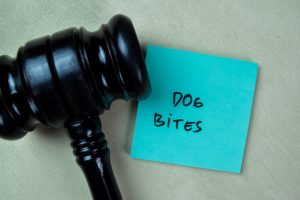What You Need to Know About Compensation for Pain and Suffering in New York Dog Bite Claims
 The Limitations on New York Dog Bite Claims
The Limitations on New York Dog Bite Claims
Dog bite claims are very different from other types of personal injury cases.
If you’ve been injured in an unprovoked dog attack, you are most likely entitled to compensation for your medical expenses. Since New York employs a “strict liability” rule for dog bite claims, you do not have to establish the pet owner’s negligence to recover most costs associated with care.
However, dog attacks often cost victims much more than money.
Although you may be able to press a claim for pain and suffering, you’ll first have to overcome the obstacle posed by New York’s “one-bite rule.” Under this rule, you must prove that the dog owner knew their pet was dangerous in order to obtain compensation for other economic and non-economic damages.
The Definition of “Dangerous Dog” in New York State
A dog owner is only liable for pain and suffering damages if they knew that their pet was aggressive or otherwise had a propensity for violence. In New York, dogs that are aggressive or have a propensity for violence are sometimes termed “dangerous dogs.”
Under N.Y. Agric. & Mkts. L. § 123 and N.Y. Agric. & Mkts. L. § 108, a dangerous dog can be defined as any dog that has:
1. Attacked a person, pet, or companion animal without provocation;
2. Behaved in a manner that a reasonable person would believe presents a serious risk of physical injury or death to another person or pet;
3. Attacked and injured or killed a service dog, guide dog, or hearing dog.
The Two Types of Pain and Suffering
If a dog was dangerous, yet its owner failed to take reasonable precautions to keep their pet from harming others, you could obtain compensation for pain and suffering.
This distinct category of non-economic damages could include:
1. Physical pain and suffering. Physical pain and suffering damages are compensation for the physical pain you have sustained as the result of a dog attack.
2. Emotional pain and suffering. Emotional pain and suffering damages provide financial relief for the emotional aspect of your recovery, including feelings of anxiety, insecurity, trauma, stress, or depression.
New York law does not limit damages for pain and suffering in most dog attack claims, but you must provide evidence to obtain compensation.
How to Prove Pain and Suffering in a New York Dog Bite Lawsuit
Since pain and suffering are intangible forms of hardship, they can be challenging to prove.
However, you may be able to substantiate your claim by providing evidence including, but not limited to, the following:
1. Photographs of your physical injuries;
2. Testimony from eyewitnesses, family members, friends, and colleagues;
3. Testimony from your doctor or another expert medical witness;
4. Excerpts from your medical records;
5. Excerpts from your pain journal;
6. Written statements from a psychiatrist, psychologist, or other mental health professional; and
7. Prescription records for drugs associated with physical pain or emotional trauma.
Although pain and suffering damages could constitute a significant portion of your settlement or court-ordered award, this kind of compensation is often contentious. If an insurance adjuster or defense attorney has an opportunity to contest your claims, they most likely will—even if it comes at the cost of your recovery.
 Buffalo Personal Injury Lawyer News
Buffalo Personal Injury Lawyer News

